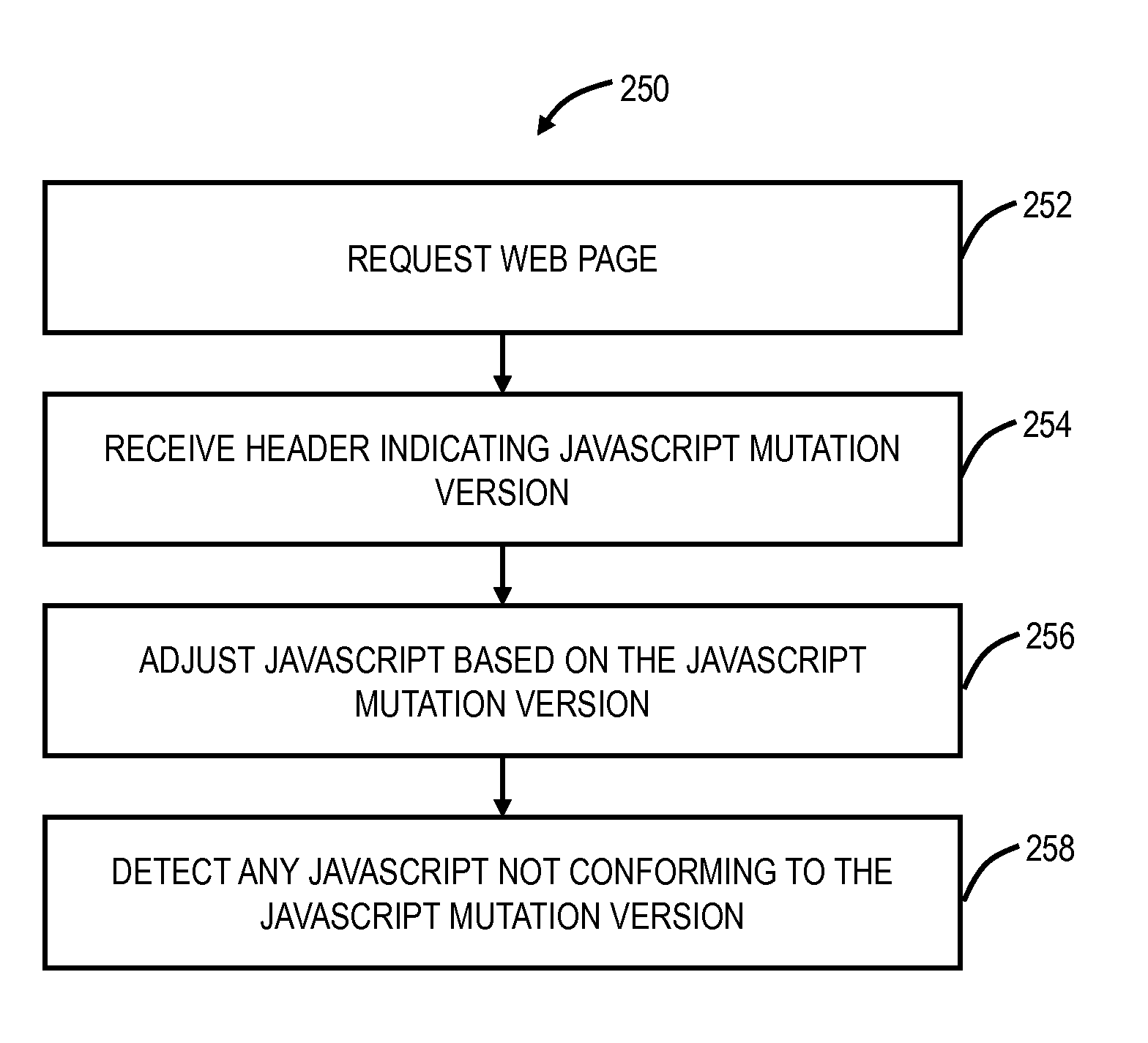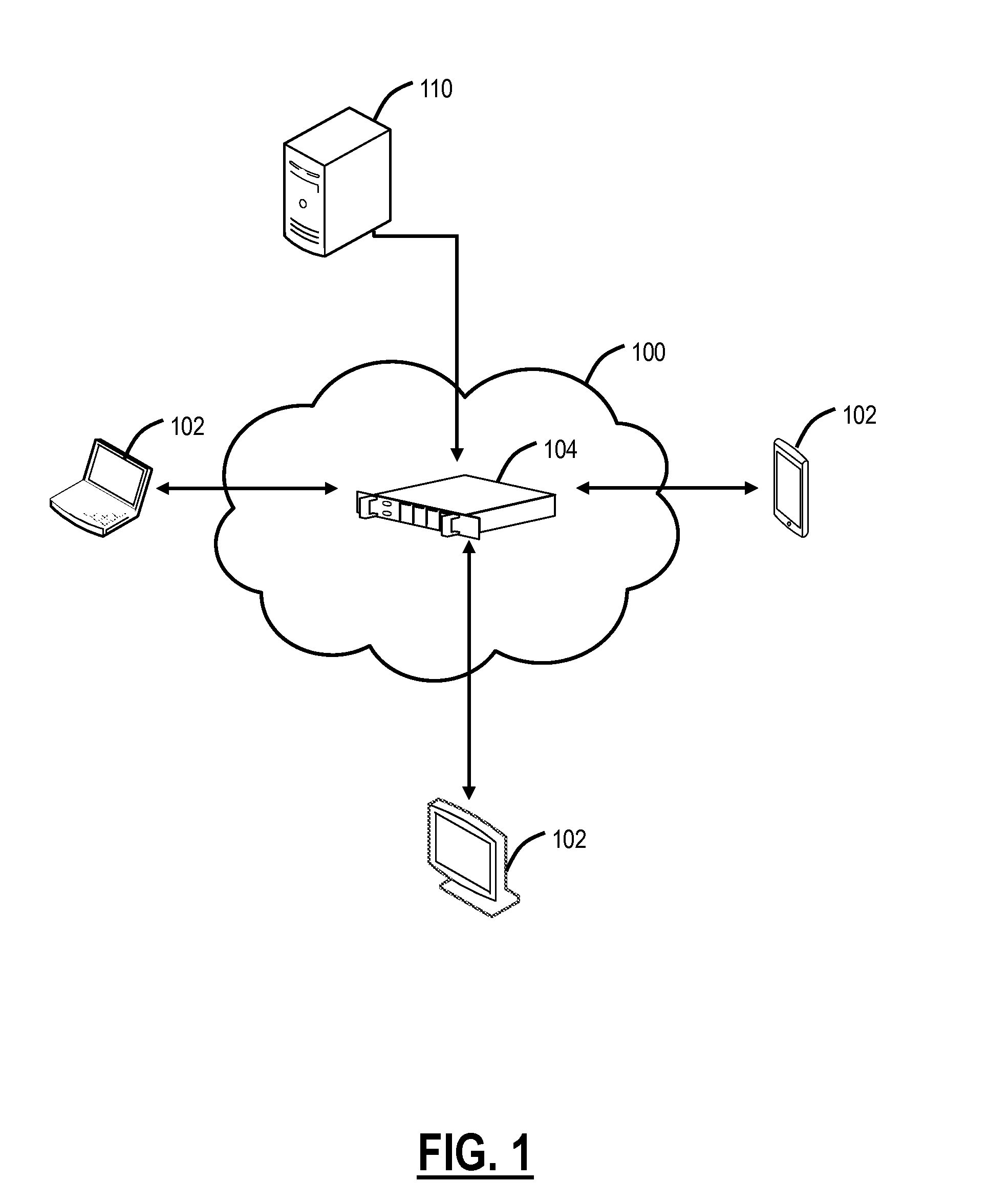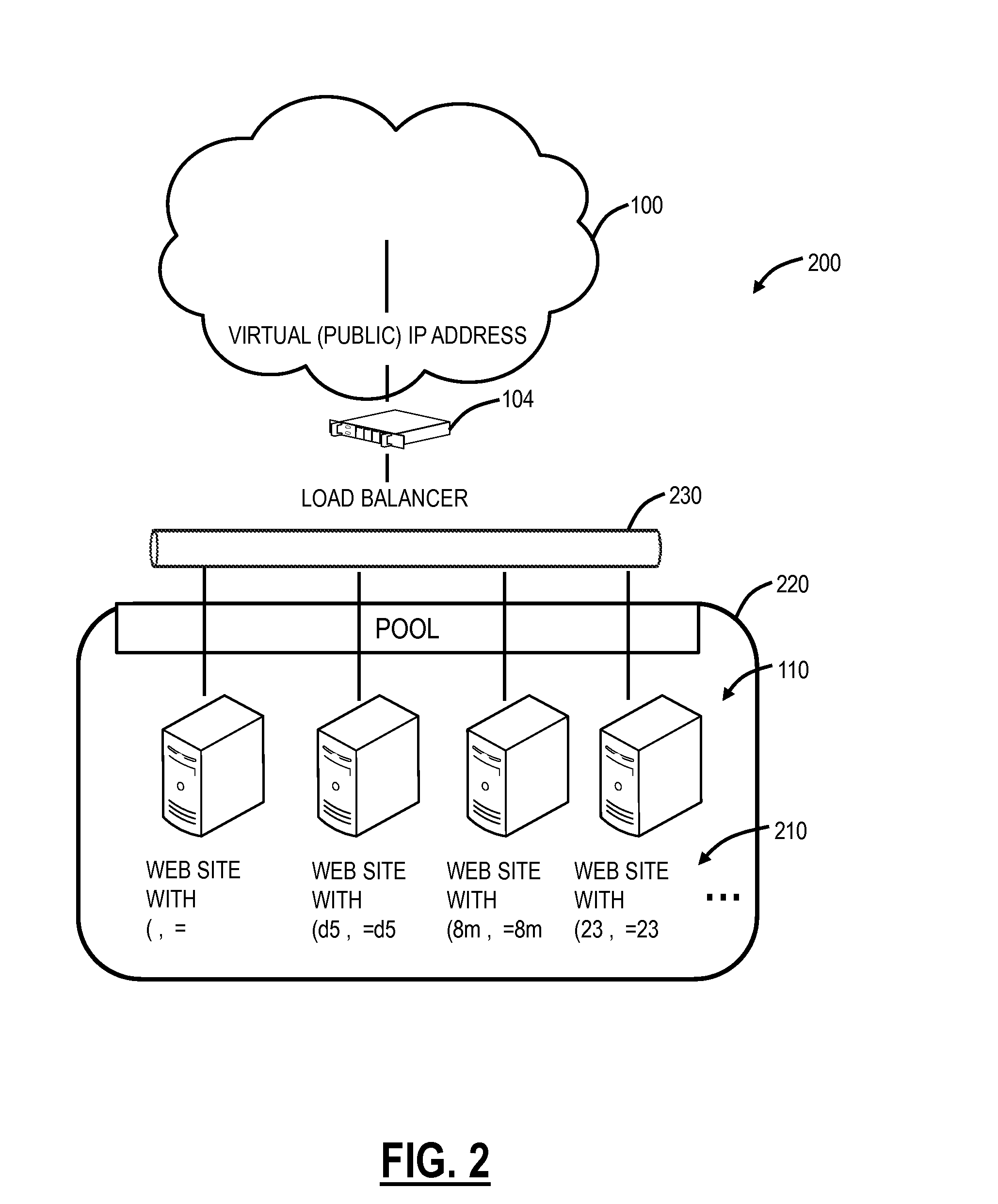Moving target defense against cross-site scripting
a cross-site scripting and target technology, applied in the field of security in computer networking systems and methods, can solve problems such as loss of confidential information, identity theft, virus and trojan installation, web page malicious behavior, etc., and achieve the effect of avoiding run time penalties
- Summary
- Abstract
- Description
- Claims
- Application Information
AI Technical Summary
Benefits of technology
Problems solved by technology
Method used
Image
Examples
Embodiment Construction
[0020]In various exemplary embodiments, a moving target defense against cross-site scripting (XSS) is described to defend against XSS attacks. Generally, the moving target defense is based on mutating symbols in the JavaScript language and leveraging commonly used load-balancing mechanisms to deliver multiple copies of a website using different versions of the JavaScript language. A XSS attack that injects unauthorized JavaScript code can thus be easily detected. This solution achieves similar benefits in XSS protection as Content Security Policy (CSP), a leading web standard to prevent cross site scripting, but can be much more easily adopted because refactoring of websites is not required.
[0021]Again, the approach described herein is based the principle of moving target defense, to mitigate XSS attacks with CSP-like benefits without the requirement of refactoring JavaScript programs in existing websites. This approach, referred to as the moving target defense against XSS (MDX), sh...
PUM
 Login to View More
Login to View More Abstract
Description
Claims
Application Information
 Login to View More
Login to View More - R&D
- Intellectual Property
- Life Sciences
- Materials
- Tech Scout
- Unparalleled Data Quality
- Higher Quality Content
- 60% Fewer Hallucinations
Browse by: Latest US Patents, China's latest patents, Technical Efficacy Thesaurus, Application Domain, Technology Topic, Popular Technical Reports.
© 2025 PatSnap. All rights reserved.Legal|Privacy policy|Modern Slavery Act Transparency Statement|Sitemap|About US| Contact US: help@patsnap.com



